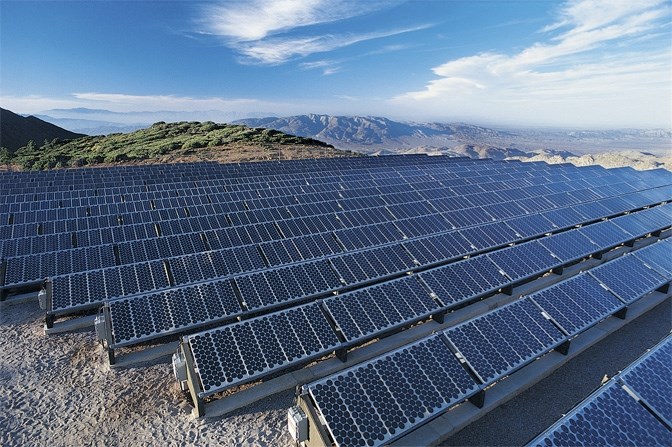Solar energy may be the way of the future, but the MD of Foothills is treading carefully.
The municipality has undertaken research into the green energy source, its implementation and implications for the MD and its residents. While the report indicated there are several gaps in understanding solar farms, the MD council is looking to move forward by seeking support and consultation from the Alberta Association of Municipal Districts and Counties (AAMDC).
Coun. Delilah Miller said petitioning the AAMDC for guidance on creating a policy within the MD of Foothills is a good start, but she’d like to see something bigger put in place on a provincial level as well.
“We’ve got to act on this,” said Miller. “We’re having this discussion with Longview because there’s a resident with a proposal in that area. I think we need to get something in place here to protect ourselves.”
She said a solar farm has been proposed northeast of the Village of Longview. While it appears to be a good location and won’t eat up farmland, Miller said she still wants to proceed with caution.
Her greatest concern is the municipality would be left holding the bag if the company or individual walked away from a solar farm in the MD.
In many places in Ontario and the US, local governments have been responsible for cleaning up abandoned solar farms, she said, and she doesn’t want to see the MD of Foothills put in the same position.
“I’d like to see the Energy Utility Board introduce some kind of recycling program,” said Miller. “Companies promoting this green energy pay into it, and then we’ve got a way to come back on them and help us clean them up if we’re left stranded at the end of the day.”
She said she’d like to see more information before the MD or the Province move forward with developing solar farms to prove it’s a viable sustainable resource.
“I think we need to go into this a little cautiously and look at it differently, and we are,” said Miller. “Green energy is great, but it’s got to be truly green with some kind of recycling program in place when it’s all said and done.”
She’s also concerned the MD could be left holding the bag if solar farm owners aren’t able to pay property taxes.
“We’ve got enough on our plate because of what we’re experiencing with the oil and gas industry,” said Miller. “We’re not able to collect taxes from the oil and gas companies because of the economy, and it’s coming to a total of around $4 million right now.”
MD manager Harry Riva-Cambrin told council while clean-up and remediation of solar farm sites would fall under provincial jurisdiction, similar to oil and gas operations, non-collection of taxes would be where the MD could face issues.
“At a certain point you could take the land under tax sale, but the solar panels themselves would probably be similar to power and pipeline, so you won’t be able to seize those even if you wanted to,” Riva-Cambrin said. “It depends on how the Province assesses these things, which we don’t know yet.”
He said the municipality and Foothills residents could end up having to deal with the fallout of issues from solar farms, but the MD wouldn’t have any jurisdiction or the ability to do anything about it, because solar power would be classified as a provincially-governed utility.
Mayor Larry Spilak said from his perspective, he’d like to see the MD of Foothills develop its own policies and land use bylaws to ensure solar farms don’t have a negative impact on residents.
“Where we have seen full quarter sections or 80 acres, or even 20 acres covered in these solar panels, it’s a distraction, to say the least,” said Spilak. “It’s something I certainly wouldn’t want to have to look at as a neighbour.”
He said policies should give area residents the opportunity to participate in the decision-making process when it comes to solar farms through public hearings.
He said he hopes the AAMDC will be able to work with municipalities and the province to allow rural municipalities to have some authority over the placement of solar farms, so that resident voices can be heard.
“Really what we’re looking for here is some policies surrounding solar,” said Spilak. “We want to make sure our residents have the opportunity to speak up when these proposals come forward.”
Director of planning Heather Hemingway said the issue will be brought forward to the MD of Foothills’ rural counterparts before going before the AAMDC at its fall convention in October.
She said at the end of the day, the MD will be limited when it comes to development permits for solar farms.
“We’ll only have so much authority when it comes to permitting these things – really location, farmland use, setbacks, heights, offsite impacts, glare and that kind of thing,” Hemingway told council. “But if we did put a development permit process or land use rezoning process in place, and I’m talking commercial operators here, you could turn them down.”
The MD of Foothills will continue to investigate best practices and land use options, she said. A public hearing on the land use bylaw to allow for solar farms is expected by the end of 2016.




